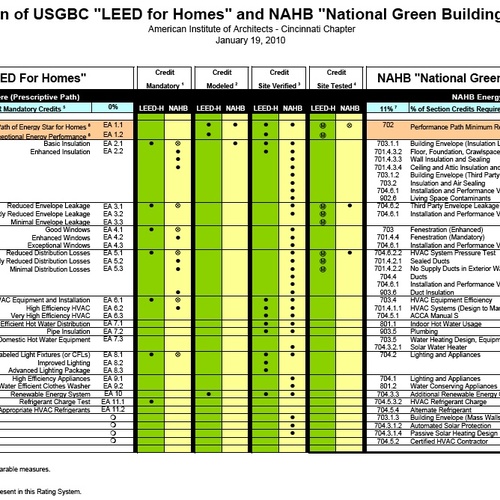
Image Credit: istockphoto
The energy efficiency directives tentatively approved early last week by the European Union attracted attention – and praise from many quarters – for requiring almost all new buildings constructed after 2020 to perform to “near zero” energy efficiency standards.
The EU directives, which are expected to be formally approved in early 2010, are seen as important not only for their potential ecological and economic impacts but also for political reasons, since the country now serving as president of the EU, Sweden, has been eager to secure agreements on climate change initiatives in advance of the United Nations Climate Change Conference, set for December 7-18 in Copenhagen.
The EU acts, the U.S. offers tentative goals, China tepid ones
As noted in a Greenwire blog posted on the New York Times website, the EU’s energy commissioner, Andris Piebalgs, says the directive for near-zero buildings is crucial if the EU is going to meet its goal of cutting emissions 20% from 1990 levels by 2020.
“By this agreement, the EU is sending a strong message to the forthcoming climate negotiations in Copenhagen,” Piebalgs said. “Improving the energy performance of buildings is a cost-effective way of fighting against climate change and improving energy security, while also boosting the building sector and the EU economy as a whole.”
Whether the EU’s move will pressure other summit participants to make major, solid commitments to manage climate change remains to be seen, although on Wednesday White House officials said the U.S. delegation at the summit will offer a provisional pledge to reduce U.S. greenhouse gas emissions “in the range of” 17% below 2005 levels by 2020 and 83% by 2050. As the Times points out, that is a significantly weaker commitment than the EU’s, but still the first time in a decade the U.S. has held out the possibility that it would commit to targets for reducing greenhouse gases.
And on Thursday China followed up with a plan to reduce the amount of carbon dioxide generated per unit of economic output by 40% to 45% compared to 2005 levels. Because the country already has energy efficiency standards tied to economic output, however, China’s newly revealed carbon-reduction plan appears to some observers to be short on ambition and long on preemptive maneuvering for the Copenhagen talks.
“The Department of Energy estimates that existing Chinese policies will already cut carbon intensity by 45 to 46 percent,” Michael A. Levi, director of the climate change program at the Council on Foreign Relations, told the Times. “The United States has put an ambitious path for emissions cuts through 2050 on the table. China needs to raise its level of ambition if it is going to match that.”
A U.K. take on performance standards
More precisely defined building-performance measures also are in the offing in the U.K., where the housing minister, John Healy, said this week that the government would adopt a minimum standard for the energy efficiency of zero-carbon homes that had been recommended by Zero Carbon Hub, a U.K. agency formed to further production of low-carbon homes. As noted in a recent story by U.K.-based Builder magazine, the standard would set annual targets of 46kWh per square meter for semi-detached and detached properties and 39kWh per square meter for all other homes, producing a 20% to 25% reduction in carbon emissions over gas-heated homes compliant with current regulations.
“There’s a driving force behind the green homes movement from homeowners, developers and local authorities,” told attendees at the Making Sustainable Development Happen conference, which was organized by the magazine and the UK Green Building Council. “We’re pushing at an open door, and there is a lot of momentum to radically rethink how we design our buildings for the future.”
Environmentalists critique the EU directives
For many environmental groups, meanwhile, the pace of progress in developing carbon-emission initiatives – even the EU’s relatively stringent directives – has generated more dismay than delight.
Catherine Pearce, a spokeswoman for the European Environmental Bureau, an advocacy group specializing in environmental and sustainability issues facing the EU, told European Voice.com that the EU agreement on building codes was a missed opportunity, and that the directive deadlines were “too late” to help the EU meet its targets on reducing greenhouse gas emissions by 2020. (Those targets include a 20% reduction in domestic greenhouse gas emissions by 2020 and a pledge to meet a 30% reduction if comparable commitments are made by other developed and developing nations.)
Another environmental group, WWF (formerly the World Wildlife Federation), complained on its website that the EU’s efficiency measures, which begin phasing in in 2013, may be too little too late because they primarily target new buildings, which comprise a relatively small percentage of the overall stock, and don’t reach full force until 2021. The EU would have done better, WWF said, to establish clearer targets, and more-solid financing mechanisms, for renovating existing buildings.
The Greenwire report also noted that the EU agreed to expand the scope of efficiency labeling to all consumer products that use energy, and could eventually be attached to industrial products such as cold storage rooms, display cabinets, and vending machines, and products that have indirect energy costs, including window glazing and frames, or exterior doors. Electrical appliances for the home, though, will be among the first items to get the efficiency rating labels – from a green “A” to a red “G” – which would appear in any advertisement that touts the appliances’ price or energy savings.
Weekly Newsletter
Get building science and energy efficiency advice, plus special offers, in your inbox.














0 Comments
Log in or create an account to post a comment.
Sign up Log in